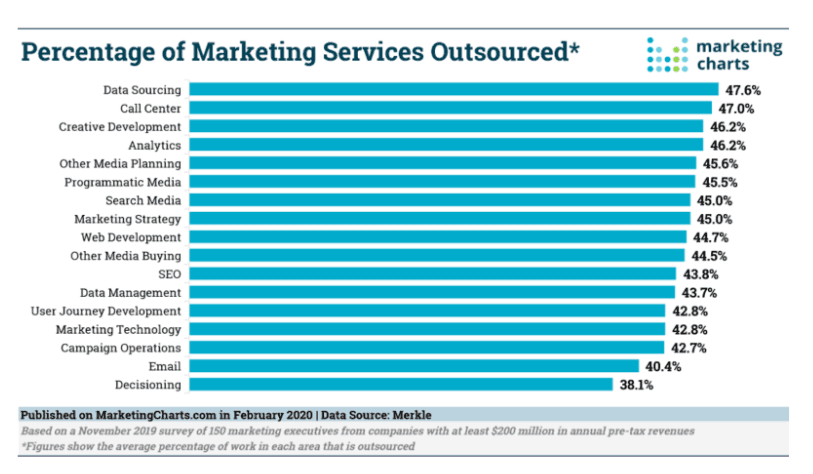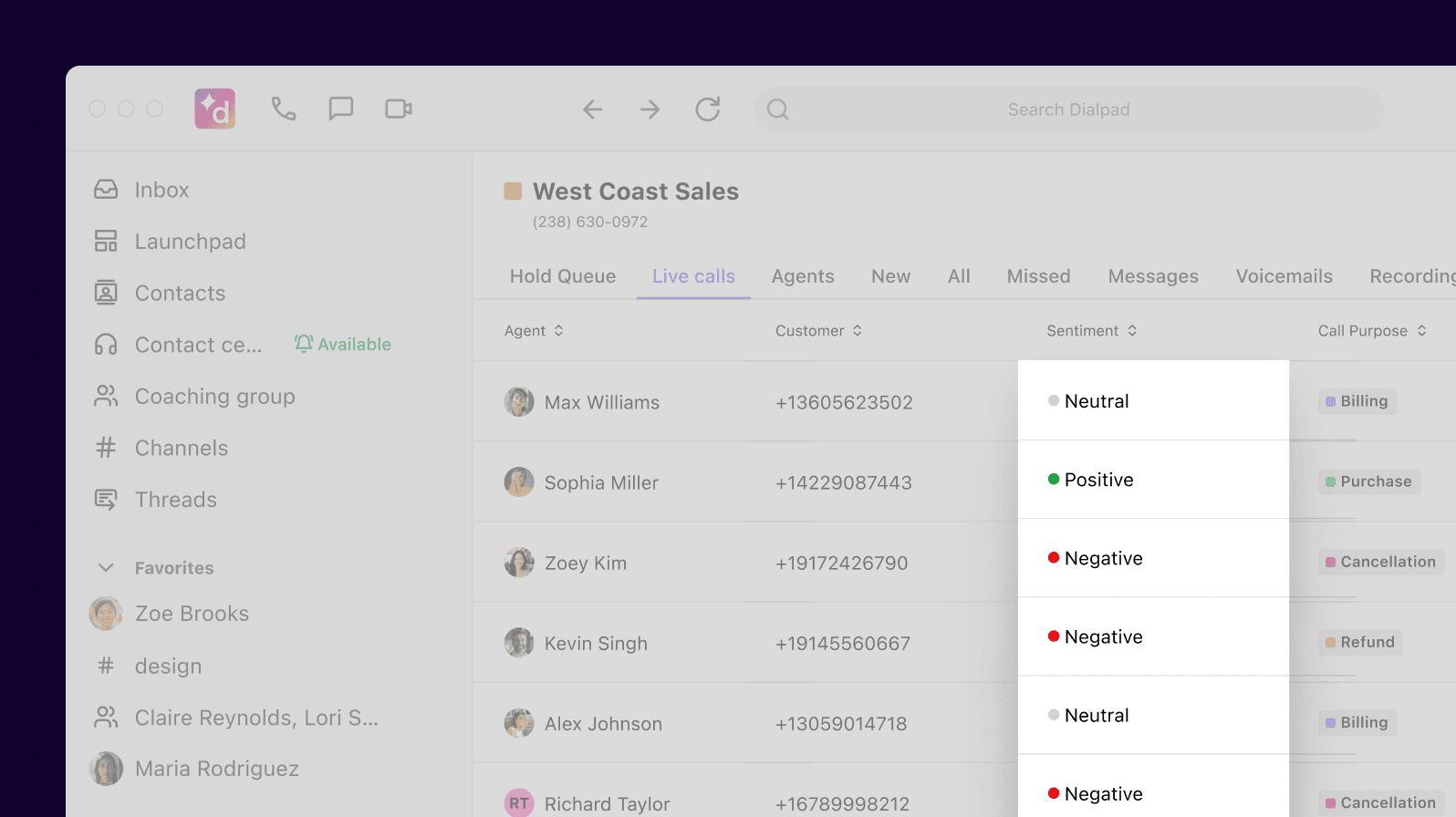BPO call centers and contact centers: How they work, and how to outsource effectively

VP of Customer Experience

Tags
Share
If you run a contact center and have agents in different countries, you’ve probably come across BPO (business process outsourcing) contact centers and call centers.
But outsourcing isn’t the easiest thing to do effectively. One of the main challenges, of course, is quality assurance (since it’s harder to manage a team or agents in another country).
But this is a manageable challenge, and if you have a good BPO call center setup, the benefits often weigh it. So how do you choose the right BPO call center solution for you? And how can you outsource a hosted contact center effectively so that there’s no drop-off in service quality, no matter who your customers and callers end up talking to?
In this post, I’ll walk you through the fundamentals of making a BPO call center solution work for a business.
First, what is a BPO call center?
Business process outsourcing (BPO) is when you outsource a part of your business operations to a third-party service provider.
A BPO call center is an outsourcing service that processes incoming and outgoing service user calls for other companies.
A quick note: “Contact center” vs “call center”
A call center is pretty self-explanatory—it’s a business’ department or team that deals with incoming and outbound calls. (Usually, very small businesses wouldn’t have this because they don’t get enough calls to justify the expense.)
Today, more and more businesses are moving to a “contact center” model instead of a call center model because, well, people aren’t just calling anymore and we want to make sure we can connect with people in the way that makes sense to them. The digital channels text, message, email, are growing in popularity as well as some of the newer video connections.
A contact center would facilitate all of those different interactions.
Long story short, contact centers are like call centers for the 21st century.
📱 Side note:
Many folks still use “contact center” and “call center” interchangeably, and we’ll use both in this post as well, but just be aware that going forward, “contact center” is the term to use because it’s more all-encompassing.
Understanding the types of call and contact centers
There are many different types of contact centers out there.
Some specialize in market research, and some act as answering services, while others focus on a specific industry, like healthcare, or a particular function, like telemarketing.
Whatever your needs are, there’s probably a contact center out there for you.
Let’s look at a few main types.
Outsourced and in-house centers
In-house call centers are typically set up and managed by the companies themselves. In other words, in-house call center employees work directly for the company.
Some businesses refer to this as “front office” and “back office.” Customer-facing employees or people who deal directly with customers work in the front office. Employees who work behind the scenes and don’t deal directly with customers work in the back office.
Outsourced call centers, on the other hand, are run by third-party companies. These would be your BPO contact centers.
If you use an outsourced call center, their agents would be the ones who take your inbound and outbound calls—not your own employees.
Inbound and outbound centers
Inbound call centers handle any kind of incoming calls from customers. When you call a company, you’re probably being helped by an inbound call center.
Outbound call centers make outgoing calls to customers and potential customers. Often, outbound calls are used to sell a product or conduct research. If a company has ever called you to try and sell you something, they’re probably working at an outbound call center.
Proactive and reactive centers
This is a slightly different spin on the inbound vs outbound contact center comparison.
Reactive call centers wait for a customer to come to them with a problem, and then they work to solve the problem. This is a standard model and probably one you’ve come across.
Proactive call centers try to address a customer’s issue before they have to reach out. These contact centers are often analyzing customer accounts proactively and use that understanding of what’s going on with the customer or prospect to do outreach.
Typically, these contact center agents have pretty robust cloud call center software, CRM tools, and data analytics that allow them to anticipate problems early and nip them in the bud before the customer has to contact them. Because of this, proactive call centers and contact centers usually contribute to improved customer satisfaction.
✨ Want to improve your contact center's performance?
Grab the Contact Center Playbook, which breaks down everything you need to know, from setup to improving customer satisfaction—with examples from real contact center teams across different industries.
When is it time to outsource?
Knowing when it’s time to outsource is a decision that’s unique to each business. There are two main scenarios where you know it might be time to outsource.
1. This is the less ideal situation, but if your contact center operations are already stretched thin, then outsourcing can expand your team and abilities relatively quickly. It would’ve been better to outsource before you reached this point, but better late than never.
2. On the other hand, you can proactively look at your business on a regular basis. If you know that your resources are limited or will be stretched soon, or if you have other areas of the business you need to prioritize above an in-house call center, then it’s time to look at outsourcing.
For example, Zak from Service Today, a plumbing and home repair company, has customers and business functions that are spread out across Australia. They’ve grown significantly in recent years, and were able to plan for that growth.
They have customers and potential customers calling every day—and to handle these incoming calls, they have contact center teams in Australia and the Philippines.
(Technically, Service Today has a kind of “hybrid” BPO call center—they didn’t hire a third party to run their overseas contact center, but they did technically “outsource” by hiring overseas. Calls would primarily go to their Australia team, and any call overflow would be routed to their Philippines-based team. This allows them to support their core business, but keep things cost-effective.)
A 6-step guide on outsourcing for call centers
1. Figure out what you need
Before you commit to an outsourcing call center provider, think about why you’re outsourcing your call center in the first place. The reason for outsourcing will point you in the direction of who you should choose to handle your business.
Evaluate the types of calls and channels your business needs handled. Is it primarily cold calls? Is it customer service? Looking for a help desk? According to a recent survey, data sourcing was the number one function outsourced by marketing services:

As I mentioned earlier, BPO companies can specialize in inbound or outbound calls, cater to different industries, and focus on different functions. So you might want to choose the best company that specializes in your needs.
2. Choose the best service provider for your business
Now that you know what your business needs, you can look for the best service provider. Here are a few things to consider:
Local or overseas?
Do you want your BPO call center service to be located locally to your business? Or do you want to save money by outsourcing to another country? Both options have their pros and cons.
Local call centers are easier to access, while foreign call centers can offer 24/7 customer care options.
Knowing what your business needs are will make this consideration clearer.
Do you need specializations?
Like any business industry, BPO call centers can specialize in certain areas of business—like your own business, they’re not cut-and-paste, one-size-fits-all.
If you’re running a manufacturing business looking for technical support, you’ll have different needs than a retail clothing business looking for human resource functions.
What’s your budget?
Make a budget to help determine what your business can afford.
If you’re paying more for your outsourced BPO call center service than you would for an in-house call center, then reconsider where you’re spending your money. Transition to a more cost-effective solution, like a different BPO company or a mix of in-house support and outsourced support.
3. Have a clear BPO strategy
Don’t enter into a BPO call center outsourcing situation without creating a strategy for your partnership. You’ll be putting a critical part of your business in a third party’s hands, so you want to make sure it’s a good fit. Set a strategy with goals and check-in as the partnership progresses.
4. Make it contract-bound
Solidify your strategy by clearly stating SLAs (service level agreements) with your chosen service provider in writing. Make sure both parties know what to expect and that you’re receiving the standards of service you would expect from an in-house team.
5. Plan your transition phase
Transitions can be tricky. By nature, they’re sensitive situations. It doesn’t matter if you’re a small company that needs a little bit of outsourced help or a large enterprise. Having your team involved and giving your BPO call center provider access to business information will make the whole thing much more manageable.
Be clear about what you expect during the transition, your service expectations, and what your team needs. But don’t worry too much. BPO call center providers are used to onboarding new clients and navigating transitions—odds are they’ll be able to help you get through the process.
6. Monitor your results regularly
Don’t drop the ball when you finally get everything running smoothly with your chosen BPO call center provider. Analyze reports and metrics to make sure your goals are being met.
That’s how Erin, who heads up contact center operations at PadSplit, keeps track of problems with customer experience.
“Dialpad’s call dispositions are really important for us—it gives us better reports and lets me see the breakdown of different problems we’re seeing. A big part of our job in Customer Experience is recording our calls, reviewing them, and going back to do training.”
In fact, contact center supervisors can keep an eye on customer sentiment on calls for all their agents—from anywhere:

Pros and cons of using BPO for your call center or contact center
BPO isn’t the best option for every contact center. It can be great in some cases, but there are always trade-offs. Here are a few things to consider:
Pros
It helps you reduce costs
The savings in outsourcing your call center are pretty significant. You don’t have to worry about renting space, setting up utilities, figuring out IVR (interactive voice response), or hiring and onboarding new employees.
While there’s work involved in hiring a BPO call center, it’s a lot less work and time than setting up an entirely new call center from scratch.
It allows you to provide 24/7 support
A 24-hour round-the-clock support team that can help your customer at any time of day is the dream, and a BPO service provider can make that happen.
Most BPO services have setups all over the world in multiple time zones. That means your customers can reach out for customer support anytime, no matter where they are.
It helps lighten the load on staffing
While employees are the driving force behind any business, recruiting, staffing, and training workers is a time-consuming and expensive process. Outsourcing your call center eliminates this problem for your business by handling any and all staffing issues.
It could be a more efficient option for your contact center
Call center agents handle a lot of calls that range from pleasant to nightmare-ish. You’ve probably heard some horror stories.
Training your employees for call scenarios is time-consuming and, as we mentioned before, expensive. BPO companies ensure their staff are trained and professional, ready to handle any kind of customer call.
Because of their experience, BPO call center agents can also handle calls with more ease and speed. That means less waiting for your customers and an overall better customer experience.
Technological advances are equipping BPO call center agents with better tools as well. Dialpad Ai, for instance, helps agents with customer issues while they’re speaking to them, and can transcribe calls while distinguishing between different voices with ease.
Cons
You might need to do more training
While using a BPO call center service frees up a lot of the work on your plate, some workloads will increase. One of them is training, and that can be a big drawback.
A BPO call center will handle all of your calls for you, but that also means they need to learn the ins and outs of your specific support services or customer service strategy. Sometimes, they may even need training in business specifics to better accommodate your customers.
Providing and managing the training materials workload can be a significant investment and something to consider.
There might be security risks
Security incidents are a big issue in business right now, and the BPO industry is no exception.
Call centers often store sensitive information, making them choice targets for criminal activity. With an in-house call center, you still face security concerns, but you have more control over preventing and handling breaches.
Have you decided on investing in a BPO call center?
Hopefully, all of that information helped you decide whether or not you want to invest in a BPO call center. If you’ve decided to go with one, you’re not alone. According to a recent report, in 2020, the BFSI (banking, financial services, and insurance call centers) BPO services market generated $85.12 billion. And that’s just one segment of the industry.
Investing in a BPO is a practical decision for any business. Remember to weigh the pros and cons, figure out your specific needs, and find the best service provider for you.
And don’t forget to manage your business relationship with your BPO call center like a part of your business. It may seem more natural to think of them as contractors, but fostering a close partnership will go a long way towards strengthening your business relationship, which in turn, will better serve your customers and your business.
Need a tool to support outsourced contact center work?
See how Dialpad's AI-powered customer engagement platform is helping businesses handle outsourced contact center operations while still retaining performance and quality levels. Book a demo or take a self-guided interactive tour of the app on your own first!
